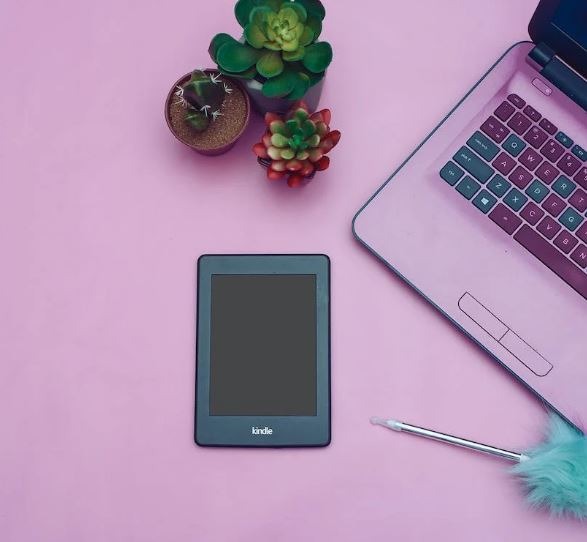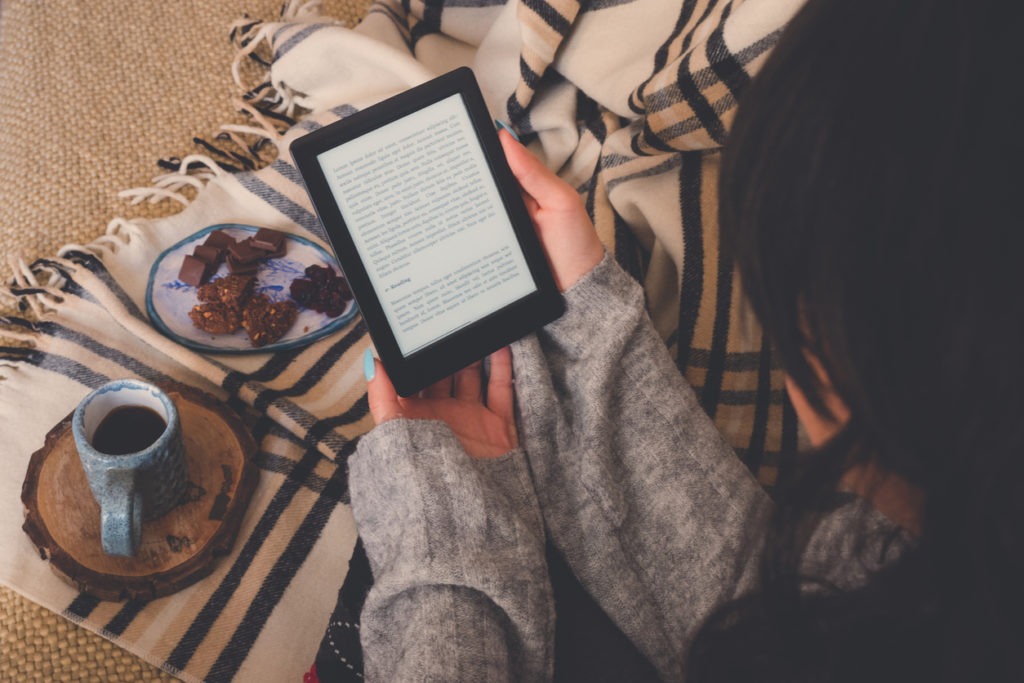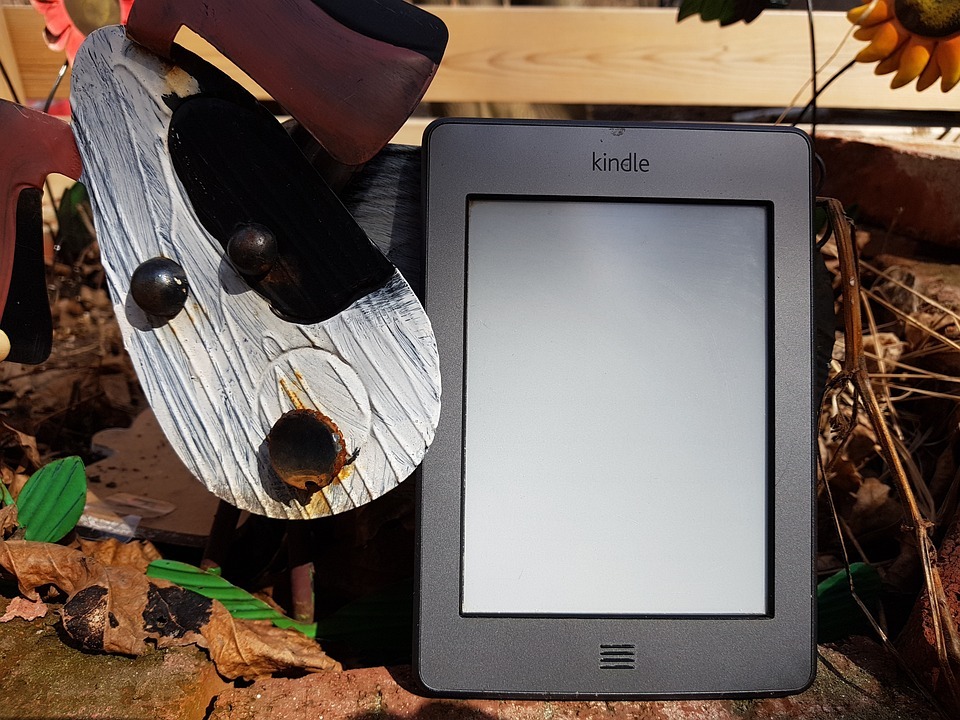Kindles are easy, dependable, and wonderful at what they do; with one palm-sized gadget, you can bring thousands of books to the park or mountain, and a single charge provides a month’s worth of battery life.
The ability to download and save thousands of comics, novels, and audiobooks makes the Kindle reader a popular device among book lovers. A Kindle device with 32GB of internal storage can store nearly 14,000 titles, allowing you to read one new book per week for 269 years without repeating a title. And while most Kindle tablets have a fixed amount of internal storage, many also enable Amazon Cloud backup if you need to free up space on the device, as well as micro SD cards for expanding on-board storage.
Many Kindle readers are also waterproof to a depth of two meters, allowing you to bring your e-reader to the beach or pool without worrying about splashes and spray destroying your tablet. And with anti-glare screens and auto-adjusting backlights, reading your favorite books in direct sunshine is easier than ever.
How to select the optimal Kindle for you?
Let’s begin with your budget, as that is the most efficient approach to make this determination. If you are currently strapped for cash, the $90 Kindle is an excellent choice. Its lighting is adequate for a few scenarios, and its battery life is not to be sneezed at.
If money is not an issue, you will have to choose between the Kindle Paperwhite and the Kindle Oasis, which is somewhat difficult. If you prefer your gadgets to be constructed with a tougher plastic that still feels dependable, the Paperwhite is likely what you had in mind. It shares the same water resistance as the Oasis and is comparable in numerous other respects.
But if you’re bored of fiddling with menus and adjusting the brightness, the Kindle Oasis is probably what you need. Its display automatically adjusts to ambient lighting conditions, perhaps its most distinctive feature, as its metallic and asymmetrical shape.
Kindle and Tablet Differences
The primary distinction between a Kindle and a Tablet is its intended use. A Kindle is exclusively built for reading. It has an e-ink display that resembles a book, a long battery life, and an easy-on-the-eyes design. Kindle lacks a camera and cannot play movies. A Tablet is comparable to a smartphone with a larger display.
There are numerous further distinctions between the two sorts of devices. To make an informed choice, it is necessary to comprehend the specific distinctions between the two products.
Simply said, a Kindle is a technological device that seeks to replicate the physical book reading experience. The purpose of a Kindle is to enhance the reading experience while providing access to thousands of books.
Kindle does this by employing a black-and-white electronic-ink display (e-ink) that closely resembles the electronic form of paper (e-paper). Therefore, the Kindle reading experience is comparable to that of reading a physical book. Even turning pages of an e-book on Kindle is identical to turning pages of a physical book.
However, because the Kindle is designed for book users, it employs very basic technology and software and lacks advanced functionality. It lacks both a camera and the ability to play videos. There is a really simple browser, but the experience of using it will discourage you from employing it!
Tablets, on the other hand, represent a compromise between smartphones and laptops. A Tablet has nearly all the capabilities of a smartphone, but its screen is larger. Despite the fact that a tablet may also be used to read books, a tablet serves a significantly different purpose than a Kindle.
Tablets are often utilized when more than reading is desired. In addition to reading, if you wish to perform office-related tasks, browse the internet, play games, view movies, and create presentations, a Tablet is the superior solution.
Considerations in Choosing Kindle Reader
There are numerous criteria to consider when selecting the finest e-reader for you; the following are the most important ones that we considered when compiling this list.
1. Screen Type
The majority of electronic devices, from smartphones to televisions, feature LCD screens, which are difficult to read in direct sunlight. E-readers have an anti-reflective e-ink display that unexpectedly resembles paper. E-ink displays are only available in black and white, which may be a deal breaker if your favored genre contains several graphs or images.
2. Screen Size
It should not be necessary to strain your eyes to read a book on a digital screen. All of our recommendations feature a six-inch (or larger) screen, so the reading experience will be comparable to that of a paperback. E-readers allow you to modify the text size of your book to your degree of comfort, but screen size still matters.
3. Battery Life
E-readers are among the most energy-efficient devices due to their singular function and black-and-white e-ink displays. If you read for one hour every day, you can easily spend weeks without charging a device. We ensured that the devices on our list have the longest possible battery life, so you won’t be left hanging mid-flight.
4. Storage
Digital books take up surprisingly little space — even the largest ones! — thus all the e-readers in our guide can handle hundreds of books, and some offer expandable storage if you want to save larger files, such as PDFs, images, or audiobooks.
5. Supported Format
The majority of digital books are available in EPUB format, but our picks can read a great deal more. Because you wish to use multiple digital book marketplaces to develop your library or save your own documents, we took this into account.
6. Screen illumination
Older e-readers lacked an internal source of illumination, necessitating the use of natural or artificial light to read. This is undesirable if you are reading next to a sleeping companion or in a crowded location such as an airplane or train. All of our recommendations include illuminated displays, so you never have to worry about these issues. Consider that a lit screen will consume more power, so you may need to recharge your e-reader more frequently.
7. Waterproofing
If you enjoy reading in the shower or on the beach, you’ll need an e-reader that can withstand splashes. This functionality is not yet standardized, but it is becoming so.
In conclusion
Many people still prefer paper when it comes to reading, but e-readers are gradually becoming the preferred technology due to their mobility, ease of use, and multifunctional features.
E-readers, which are roughly the size of a paperback or tablet and significantly lighter than a hardback book, may store hundreds of digital books at once, allowing you to carry a big library everywhere you go.



